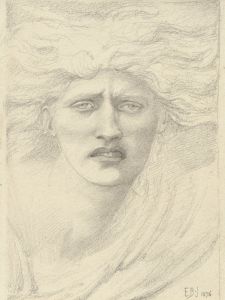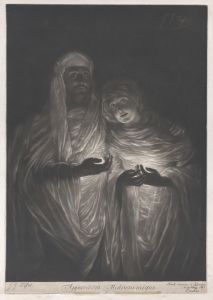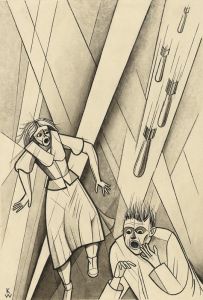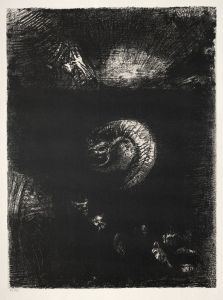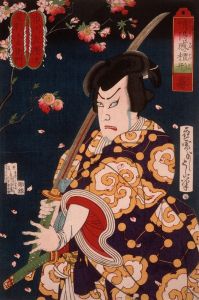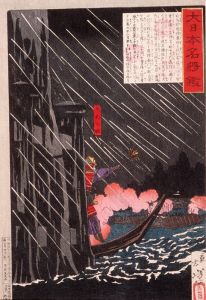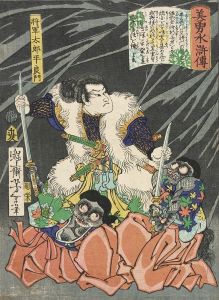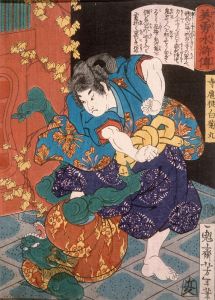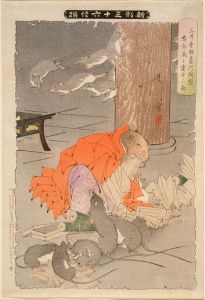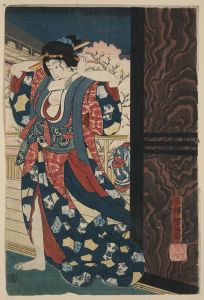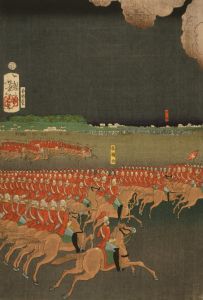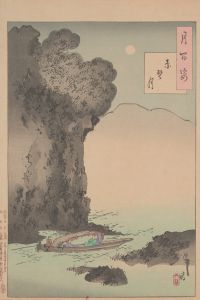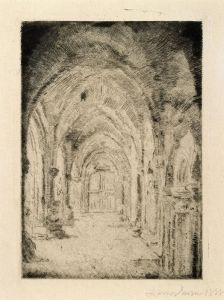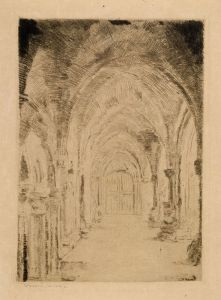
Tsunenobu and the demon
A hand-painted replica of Tsukioka Yoshitoshi’s masterpiece Tsunenobu and the demon, meticulously crafted by professional artists to capture the true essence of the original. Each piece is created with museum-quality canvas and rare mineral pigments, carefully painted by experienced artists with delicate brushstrokes and rich, layered colors to perfectly recreate the texture of the original artwork. Unlike machine-printed reproductions, this hand-painted version brings the painting to life, infused with the artist’s emotions and skill in every stroke. Whether for personal collection or home decoration, it instantly elevates the artistic atmosphere of any space.
Tsukioka Yoshitoshi (1839–1892) was a prominent Japanese ukiyo-e artist, known for his innovative and dramatic woodblock prints. One of his works, Tsunenobu and the Demon, is a striking example of his ability to blend traditional Japanese themes with his unique artistic style. This print is part of Yoshitoshi's broader body of work, which often explored themes of folklore, history, and supernatural elements.
The artwork depicts a scene from Japanese folklore or historical legend, featuring a character named Tsunenobu confronting a demon. Tsunenobu is likely Fujiwara no Tsunenobu (1016–1097), a historical figure from the Heian period, who was a courtier, poet, and musician. However, the exact narrative context of this specific artwork is not definitively documented. Yoshitoshi frequently drew inspiration from classical literature, kabuki theater, and oral traditions, and this piece reflects his fascination with the supernatural and heroic confrontations.
In the print, Yoshitoshi employs his signature dramatic composition and vivid use of color to heighten the tension of the scene. The demon is rendered with grotesque and exaggerated features, emphasizing its otherworldly nature, while Tsunenobu is portrayed with calm determination, embodying the ideal of a courageous and composed hero. The contrast between the two figures underscores the central conflict of the piece.
Yoshitoshi's work is often celebrated for its technical excellence and emotional depth, and Tsunenobu and the Demon is no exception. The artist's use of fine linework and intricate detailing brings the characters to life, while his mastery of shading and perspective adds a sense of depth and movement to the composition. The print also reflects Yoshitoshi's interest in capturing the psychological intensity of his subjects, a hallmark of his later works.
This artwork is part of Yoshitoshi's broader exploration of supernatural themes, which were popular in the Edo and Meiji periods. During this time, Japanese audiences were captivated by stories of ghosts, demons, and otherworldly encounters, and Yoshitoshi's prints catered to this fascination. His ability to combine traditional motifs with innovative artistic techniques helped to revitalize the ukiyo-e genre during a period of decline.
While specific details about the creation and historical context of Tsunenobu and the Demon remain limited, the piece stands as a testament to Yoshitoshi's skill and creativity. It continues to be appreciated by art historians and collectors for its compelling depiction of a timeless theme: the struggle between human courage and supernatural forces.





